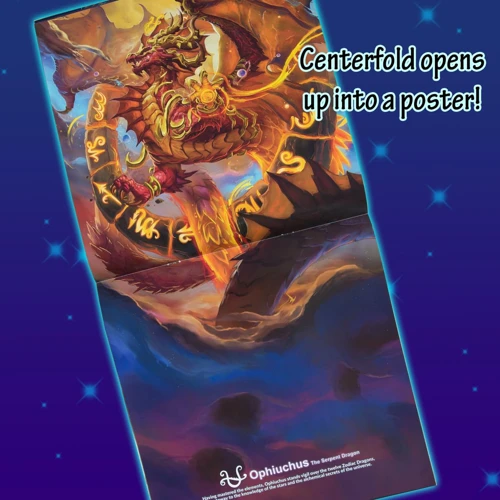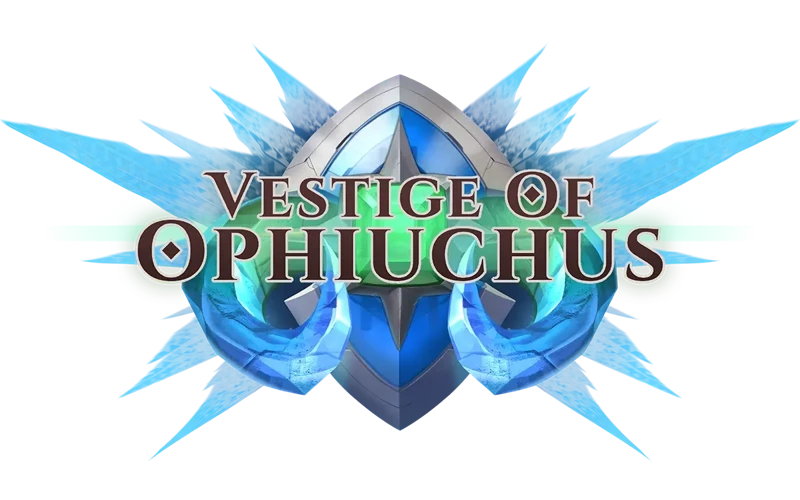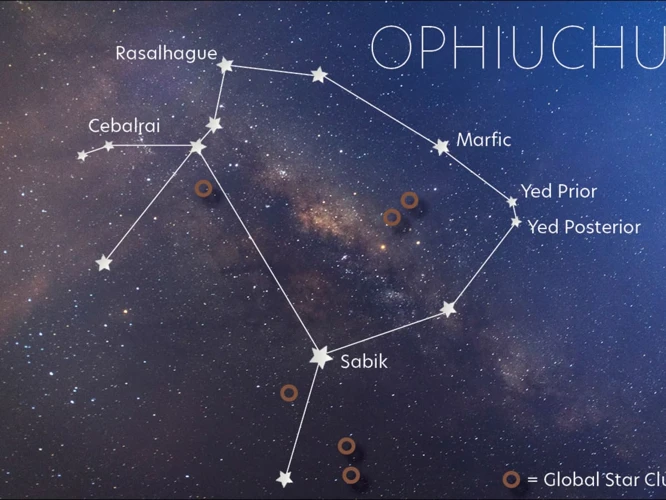In the vast and mystical realm of Norse mythology, a trove of folklore unfolds, filled with captivating tales of enchanting creatures that both bewitch and bewilder the imagination. Legends speak of powerful giants who roamed the lands, menacing trolls lurking in the shadows, and awe-inspiring dragons soaring through the skies. Amidst this fantastical tapestry, one encounters the enigmatic dwarves, the valiant Valkyries, and the ethereal elves. Join us on a journey through the realms of Norse mythology as we uncover the stories and mysteries surrounding these mythical beings, delving into their origins, powers, and the roles they played in a world steeped in magic and wonder.
Contents
- 1. Giants
- 2. Dragons
- 3. Dwarves
- 4. Valkyries
- 5. Elves
- 6. Conclusion
-
Frequently Asked Questions
- 1. What is the origin of giants in Norse mythology?
- 2. How tall were the giants in Norse mythology?
- 3. Were all giants in Norse mythology hostile towards the gods?
- 4. Where do giants in Norse mythology reside?
- 5. What powers did giants possess in Norse mythology?
- 6. Can giants shapeshift in Norse mythology?
- 7. What are some famous giants in Norse mythology?
- 8. How were giants and humans depicted in Norse mythology?
- 9. Are there any peaceful or friendly giants in Norse mythology?
- 10. Are there any tales of giants in conflict with each other in Norse mythology?
- References
-
Frequently Asked Questions
- 1. What are some famous giants in Norse mythology?
- 2. What is the difference between Jotnar and trolls?
- 3. What are some prominent dragons in Norse mythology?
- 4. Who are the Svartálfar and Dökkálfar?
- 5. What is the role of Valkyries in Norse mythology?
- 6. Can Valkyries alter the outcome of battles in Norse mythology?
- 7. What distinguishes light elves from dark elves?
- 8. Are Norse elves similar to the elves found in other mythologies?
- 9. Are there any known interactions between giants and gods in Norse mythology?
- 10. Do all Norse mythological creatures play a role in the events of Ragnarok?
- References
- Read More
1. Giants

1.1 Jotnar
The Jotnar, also known as the giants or Jotun, were colossal beings in Norse mythology. These formidable creatures were often portrayed as powerful and fearsome entities, towering over ordinary humans and possessing great strength. While some giants were depicted as hostile and antagonistic towards the gods, others were shown as more neutral or even cooperative. One famous Jotun was Ymir, the progenitor of the giant race, who emerged from the primordial void and was eventually slain by the gods. Another notable Jotun was Skadi, a frost giantess who sought vengeance for the death of her father. Giants were believed to inhabit the icy realms of Jotunheim, where they lived apart from the gods and engaged in various conflicts and interactions with them.
1.2 Trolls
In Norse mythology, trolls were creatures associated with darkness and chaos. These monstrous beings were depicted as devious and malevolent, often lurking in caves, forests, or mountains. Trolls were known for their immense size and strength, posing a threat to humans and gods alike. They were believed to turn to stone when exposed to sunlight, which is why they were rarely seen during the day. While trolls differed in appearance and abilities in different accounts, they were universally feared for their cunning and destructive nature. One well-known tale is that of the troll named Thökk, who refused to weep for the death of the god Baldur, resulting in his permanent demise. These legendary creatures continue to be a source of fascination in Norse mythology, embodying the ever-present struggle between order and chaos.
1.1 Jotnar
The Jotnar, also known as the giants or Jotun, were a prominent group of mythical beings in Norse mythology. These colossal creatures were often depicted as elemental forces of nature, representing chaos and primordial power. The Jotnar were believed to be the descendants of Ymir, the first giant, who emerged from the combination of fire and ice. In Norse cosmology, the Jotnar inhabited the realm of Jotunheim, a land separated from the realm of the gods, Asgard, by the Bifrost bridge. Within Jotunheim, various clans and tribes of giants resided, each with their own unique characteristics and abilities.
The Jotnar were renowned for their incredible strength, with some tales describing them as capable of lifting entire mountains. Their size was often described as massive, towering over ordinary humans and gods alike. In Norse mythology, giants played significant roles, often engaging in conflicts with the gods. These conflicts represented the perpetual struggle between order and chaos, with the Jotnar embodying the chaotic and untamed aspects of the natural world.
Despite their seemingly antagonistic nature, not all Jotnar were portrayed as evil or destructive. Some tales depicted giants forming alliances with the gods or even marrying them, leading to the birth of unique hybrid beings. One notable example is the giantess Skadi, who married the god Njord and became a prominent figure in Norse mythology.
The Jotnar were not merely physical beings; they were nuanced and complex, possessing their own myths and legends. They represented both the untamed forces of nature and the inherent unpredictability of the world. Exploring the realms of the giants provides a deeper understanding of the rich tapestry of Norse mythology, shedding light on the ancient beliefs and perspectives of the people who revered these fascinating creatures.
1.2 Trolls
1.2 Trolls
Trolls, the malevolent creatures of Norse mythology, were beings shrouded in darkness and mischief. These formidable entities were known for their grotesque appearance and often depicted with exaggerated features such as long noses, warts, and exaggerated limbs. They possessed immense strength and were notorious for their ability to shape-shift into various forms, making it difficult to identify them. Trolls were notorious for their cunning nature, using their wits to deceive and trick unsuspecting victims. Their preferred dwelling places were deep within dense forests, remote mountains, or dark caves where they could carry out their mischievous acts undisturbed. Trolls were primarily nocturnal creatures, as they feared the daylight that turned them into stone. Folklore is replete with stories of brave Vikings and heroes encountering trolls and engaging in epic battles. These encounters showcased the constant struggle between light and darkness, good and evil, that permeated Norse mythology. With their eerie presence and mischievous ways, trolls remain an intriguing and haunting part of Norse folklore.
2. Dragons

2.1 Jormungandr
Jormungandr, also known as the Midgard Serpent, was a colossal sea serpent in Norse mythology. This monstrous creature was the offspring of the trickster god Loki and the giantess Angrboða. With its immense size and ability to encircle the entire world, Jormungandr was a symbol of chaos and cataclysmic power. According to legend, it was foretold that during Ragnarok, the apocalyptic battle between gods and giants, Jormungandr would rise from the depths of the ocean, unleashing its mighty fury upon the world. The epic battle between the thunder god Thor and Jormungandr was believed to be one of the cataclysmic events that would mark the end of the world.
2.2 Nidhogg
Nidhogg, also known as the “Dread Biter,” was a fearsome dragon-like creature in Norse mythology. This monstrous serpent dwelled in the roots of Yggdrasil, the cosmic tree that connected the nine realms. Nidhogg was described as a malevolent entity that gnawed on the roots of the tree, seeking to bring about its destruction. It was believed that the creature’s relentless chewing contributed to the decay and suffering in the world. Nidhogg was also associated with the realm of the dead, as it fed on the bodies of the deceased. Its presence was a constant reminder of the cyclical nature of life and death in Norse mythology.
2.3 Fafnir
Fafnir, a dragon of immense power, played a pivotal role in Norse mythology. Originally a dwarf, Fafnir acquired his immense dragon form after greedily hoarding a cursed treasure known as the Rhinegold. Corrupted by the treasure’s power, Fafnir transformed into a formidable dragon, thirsting for wealth and power. In this monstrous form, he guarded his ill-gotten riches fiercely, even slaying his own brother for seeking a share of the treasure. Fafnir’s tale is intertwined with the hero Sigurd, who eventually slays the dragon in order to claim the Rhinegold for himself. This story serves as a cautionary tale of the dangers of greed and the destructive consequences it can bring.
2.1 Jormungandr
2.1 Jormungandr
Jormungandr, also known as the Midgard Serpent or World Serpent, is a prominent figure in Norse mythology. This immense sea serpent, born to the trickster god Loki, grew to such colossal proportions that it encircled the entire world, grasping its own tail. Jormungandr’s presence in the seas brought about storms, rough waters, and tumultuous waves. According to prophecy, during Ragnarok, the final battle of the gods, Jormungandr would emerge from the depths to engage in a cataclysmic showdown with the thunder god Thor. Their clash would bring forth devastating destruction, leading to the submersion of the world beneath the sea. This epic battle between two formidable forces embodies the inevitable cycle of creation and destruction, a recurring theme in Norse mythological narratives. Jormungandr’s immense size and connection to the primordial forces of nature make it an awe-inspiring and fearsome creature in the rich tapestry of Norse mythology.
2.2 Nidhogg
2.2 Nidhogg
Among the many powerful dragons in Norse mythology, Nidhogg stands out as a fearsome and malevolent creature. Known as the “Dread Biter,” Nidhogg was believed to reside in the roots of the world tree, Yggdrasil. This colossal serpent-like dragon was described as having a dark complexion and gnarled scales, exuding an aura of malice. Its primary task was to gnaw at the roots of Yggdrasil, seeking to bring about its destruction and unravel the entire cosmos.
Nidhogg was not merely an agent of chaos but also harbored a particular penchant for vengeance. It was said to feed on the bodies of fallen warriors in the underworld, perpetuating a cycle of violence and suffering. Some interpretations even suggest that Nidhogg would incite conflict among humans to ensure a steady supply of fallen warriors to feast upon.
Despite its ominous nature, Nidhogg played a vital role in maintaining the balance of the cosmos. Its ceaseless gnawing on the roots of Yggdrasil encouraged new growth, allowing the world tree to stay vibrant and thriving. This portrayal of the dragon as a necessary force of destruction and renewal reflects the complex and interconnected nature of Norse mythology.
Legends also speak of a great eagle that perches atop the world tree, constantly engaging in battle with Nidhogg, attempting to ward off its destructive intentions. This eternal struggle between the eagle and the serpent symbolizes the ongoing conflict between order and chaos, with Nidhogg representing the ever-lurking threat of entropy.
The myth of Nidhogg serves as a reminder that even amidst the grandeur and divinity of the Norse pantheon, there exist forces of darkness and destruction that must be acknowledged and confronted. It is through the collective efforts of the gods and their allies that the balance of the cosmos is maintained, reinforcing the notion that harmony and order require eternal vigilance.
2.3 Fafnir
2.3 Fafnir
Fafnir is a legendary dragon from Norse mythology, known for his insatiable greed and formidable power. According to the tales, Fafnir was originally a dwarf, the son of Hreidmar, who possessed a vast treasure known as the Andvari’s Ring. Consumed by his desire for wealth, Fafnir transformed into a monstrous dragon, guarding his hoard with fierce vigilance. His body became armored with impenetrable scales, making him nearly invulnerable to attacks. Fafnir’s insatiable thirst for gold eventually led to his downfall, as the hero Sigurd, guided by the advice of the cunning Regin, sought to claim the dragon’s treasure. Sigurd, wielding the mighty sword Gram, faced off against the fearsome Fafnir and dealt a fatal blow, piercing the dragon’s heart. As Fafnir lay dying, he spoke to Sigurd, warning him of the treacherous nature of greed. This cautionary tale of the transformative power of avarice serves as a reminder of the dangers that lurk within the human heart.
3. Dwarves

3.1 Svartálfar
The Svartálfar, also known as dark elves, were mysterious and skilled craftsmen in Norse mythology. These elusive beings were said to dwell in the depths of the earth, working tirelessly in their subterranean forges. Unlike the light elves, who possessed ethereal beauty, the dark elves were often depicted as more sinister in nature. They were known for their unmatched craftsmanship and ability to create magical artifacts. Legends spoke of the renowned dark elf named Ivaldi, who crafted magnificent treasures such as Skíðblaðnir, a ship that could navigate land and sea with ease, and Gungnir, the spear of Odin. Despite their secluded lifestyle, the Svartálfar occasionally interacted with gods and humans, offering their exceptional creations in exchange for favors or as rewards for great deeds.
3.2 Dökkálfar
The Dökkálfar, or “black elves,” were another group of enigmatic beings in Norse mythology. Like the Svartálfar, they were associated with the subterranean realms, dwelling in shadowed caves and hidden corners of the earth. However, the Dökkálfar were not known for their craftsmanship like the Svartálfar; instead, they were closely linked to the concept of fate and fortune. These mysterious creatures were believed to possess the ability to shape a person’s destiny, either through positive or negative influences. While sometimes depicted as benevolent creatures who bestowed good fortune upon those they favored, they could also be capricious or vengeful. The Dökkálfar were often associated with the goddess of fate, Norns, who shaped the lives of mortals. Their role in Norse mythology highlights the intricate belief system that encompassed both the physical and metaphysical realms of existence.
3.1 Svartálfar
3.1 Svartálfar
In Norse mythology, the Svartálfar, also known as the Black Elves, were a mysterious and elusive race of beings. Unlike their counterparts, the Light Elves, who dwelled in the realm of Álfheimr and were associated with beauty and light, the Svartálfar resided in Svartálfaheimr, a realm hidden beneath the earth. The name “Black Elves” referred not to their appearance, but rather to their affinity for the darkness and the subterranean realms.
The Svartálfar were renowned for their exceptional craftsmanship and skill as artisans. They were considered the master craftsmen of the Norse cosmos, creating exquisite and magical works of art, weapons, and jewelry. In some accounts, it is said that they even forged the mighty weapon Mjölnir, the hammer of Thor.
These secretive beings would rarely venture into the realm of humans or the gods, preferring to stay within their underground domain. They were known to be highly skilled in mining and metalworking, extracting precious metals and gems from the earth to create their marvelous creations.
The Svartálfar were believed to have a complex relationship with the gods, sometimes aiding them in their quests or forging alliances, while at other times engaging in conflicts and rivalries. They were often depicted as ambivalent and enigmatic, possessing knowledge and powers beyond mortal understanding.
It is interesting to note that the Svartálfar are distinct from the Dökkálfar, or Dark Elves, despite the somewhat similar naming. The Dökkálfar were considered malevolent and associated with death and disease, while the Svartálfar were primarily connected to craftsmanship and the earth’s hidden treasures.
Within the expansive tapestry of Norse mythology, the Svartálfar stand as a testament to the complexity and diversity of mythical beings, offering a glimpse into a realm where craftsmanship and mystery intertwine. Their legacy as skilled artisans and keepers of hidden knowledge continues to captivate the imaginations of those who delve into the realms of Norse folklore.
3.2 Dökkálfar
3.2 Dökkálfar
In Norse mythology, the Dökkálfar, also known as the “Dark Elves,” were a mysterious and elusive race of beings. Unlike their counterparts, the Light Elves (Ljósálfar), the Dökkálfar dwelled underground in the realm of Svartálfaheimr, which, as the name suggests, was a place of darkness. These enigmatic creatures had a close association with the earth and were believed to possess great knowledge of the hidden secrets of nature.
The Dökkálfar were renowned for their remarkable craftsmanship and were considered master artisans. Their skills extended to the creation of powerful weaponry and intricate jewels that were highly sought after by both gods and humans. One of the most famous treasures associated with the Dökkálfar is the magical ring known as Draupnir, which was made by the skilled hands of the dark elves and possessed the ability to multiply itself.
Despite their association with darkness, the Dökkálfar were not inherently malicious or evil. They had their own distinct culture and lived according to their own laws and values. However, they were generally more reclusive and less inclined to interact with other beings, preferring to remain hidden in their subterranean realm. This secrecy shrouded them in an air of mystique and made encounters with the Dökkálfar rare and highly significant.
It is worth noting that there are some variations in the depictions and interpretations of the Dökkálfar in different Norse sources. Some texts present them as more sinister and malevolent, capable of causing misfortune and calamity. However, the prevailing understanding portrays them as a distinct and distinctively secretive group within the realm of Norse mythology.
The Dökkálfar, with their unparalleled craftsmanship and mystifying nature, continue to capture the imagination of those who delve into the rich tapestry of Norse folklore. Their connection to the underground and their mastery of hidden knowledge make them figures of intrigue and fascination, adding another layer of enchantment to the captivating realm of Norse mythology.
4. Valkyries

4.1 Choosers of the Slain
Valkyries, also known as the Choosers of the Slain, were powerful and revered figures in Norse mythology. These divine maidens served the gods by selecting brave warriors from the battlefields to join Odin in Valhalla, the grand hall of fallen heroes. Clad in gleaming armor and mounted on magnificent winged steeds, the Valkyries would descend upon the battlefield to gather the souls of worthy warriors who had met their end in combat. With their keen intuition and unwavering sense of duty, they would choose those who displayed valor and bravery, ensuring their place in the esteemed halls of Valhalla. It was believed that these fallen heroes would have the honor of fighting alongside Odin during the final battle of Ragnarok. The Valkyries were known for their beauty, strength, and unwavering loyalty to their divine purpose. In Old Norse literature, their names were often associated with war, victory, and destiny. Valkyries played a crucial role in the Norse mythology, embodying the link between mortal warriors and the gods, and inspiring tales of heroism and honor.
4.1 Choosers of the Slain
4.1 Choosers of the Slain
The Choosers of the Slain, also known as Valkyries, are fascinating and renowned figures in Norse mythology. These powerful female beings were tasked with the honorable duty of selecting who would be taken to Valhalla, the grand hall of fallen warriors in the afterlife. Clad in armor and wielding fearsome weapons, the Valkyries would descend upon battlefields, where they would choose those warriors worthy of joining the ranks of Odin’s esteemed army. These chosen warriors, known as the Einherjar, were granted everlasting glory and the opportunity to fight alongside the gods in the final battle at Ragnarok. The Valkyries were not only fierce warriors, but they were also associated with wisdom, prophecy, and fate. They were believed to have the ability to shape and influence the outcomes of battles and destinies of individuals. In Norse mythology, there are several noteworthy Valkyries, such as Brynhildr and Sigrun, whose stories are interwoven with the fates of heroes and the unfolding of grand events. The role of the Choosers of the Slain serves as a testament to the valor and honor placed upon warriors in Norse culture, as well as the significance of the afterlife and the cosmic cycle of life and death.
5. Elves

5. Elves
In Norse mythology, elves were beings associated with beauty, grace, and magical prowess. Divided into two distinct groups, light elves and dark elves, they inhabited separate realms within the Norse cosmology.
5.1 Light Elves
Also known as Ljósálfar, the light elves resided in the realm of Álfheim. These ethereal beings were revered for their luminous appearance and their connection to nature. Described as radiant and fair, they were considered to be the embodiment of elegance and harmony. Light elves were skilled craftsmen, known for their remarkable creations, particularly in the realm of jewelry and fine arts. Their skills were highly valued and sought after by gods and humans alike. While light elves were generally benevolent, they remained enigmatic and their presence in Norse mythology was shrouded in an air of mystique.
5.2 Dark Elves
Contrasting with the light elves, the dark elves, or Dökkálfar, resided in Svartálfaheim, the realm of darkness and secrecy. Often depicted as more sinister and mischievous, they were associated with underground realms and caverns. Dark elves were skilled in magic and were said to possess the ability to shape-shift and use their enchantments to cause harm or deceive. One notable dark elf was the infamous Loki, who was known for his trickery and cunning nature. While the dark elves were not universally depicted as evil, they were often portrayed as beings who dwelled in the shadows, engaging in acts that brought chaos and disruption.
The tales of elves in Norse mythology offer a glimpse into the duality of their nature, showcasing their beauty and magic, as well as their capacity for mischief and darkness. The realms of light and darkness they inhabited symbolize the contrasting aspects of the world, and their presence adds depth and complexity to the rich mythology of the Norse pantheon.
5.1 Light Elves
5.1 Light Elves
In Norse mythology, the Light Elves, also known as Ljósálfar, were ethereal beings associated with beauty, light, and radiance. These radiant creatures were said to reside in the realm of Alfheim, a land filled with shimmering light and lush landscapes. The Light Elves were often depicted as fair and elegant, exuding an otherworldly glow. They were skilled in various forms of magic and often served as messengers between the gods and humans. According to legend, the god Freyr, associated with fertility and prosperity, was particularly fond of the Light Elves and had a close connection with them. Their existence was intertwined with the balance of light and darkness, symbolizing the delicate harmony within the realms of Norse mythology. While their place in Norse mythology may not be as prominent as the gods or giants, the Light Elves represented the celestial beauty that enchanted the imaginations of the ancient Norse people.
5.2 Dark Elves
5.2 Dark Elves
Dark Elves, also known as Dökkálfar in Norse mythology, were mystical beings that dwelled in the shadows and hidden corners of the world. In contrast to their counterparts, the Light Elves, the Dark Elves were associated with darkness, cave systems, and the underworld. These enigmatic creatures were skilled artisans and craftsmen, renowned for their craftsmanship in creating magical objects and weapons. They possessed a deep connection to the earth and its hidden treasures. Dark Elves were often depicted as more elusive and secretive compared to the Light Elves, with a penchant for mischief and trickery.
Despite their reputation as more reclusive beings, Dark Elves, like their counterparts, occasionally interacted with humans and gods. They were known to have a complex relationship with the god Loki, who took on Dark Elf form during certain adventures. However, they were not always portrayed in a negative light. In some accounts, Dark Elves were revered as guardians of ancient knowledge and guardians of sacred places.
While Dark Elves are not as prominently featured in Norse mythology as some other mythical creatures, their presence adds depth and intrigue to the rich tapestry of Norse folklore. Their elusive nature and connection to the realm of shadows make them a captivating subject of study in exploring the vast realm of Norse mythological beings.
6. Conclusion

The mythical creatures of Norse mythology hold a prominent place in the rich tapestry of Nordic folklore. From the towering giants known as the Jotnar to the devious and formidable trolls, these beings captivate our imagination and provide a glimpse into a world of magic and wonder. The dragons, with their awe-inspiring presence, leave us in awe of their power and mystery. The dwarves, with their skill and craftsmanship, contribute to the intricate workings of the mythological realm. The valiant Valkyries, the choosers of the slain, embody both beauty and strength. Lastly, the elves, with their enchanting presence, remind us of the ethereal and delicate aspects of Norse mythology. As we explore the realms of Norse mythology, these mythical creatures come alive, showcasing the complexity and depth of the Norse pantheon. Through their stories, we gain insights into the values, beliefs, and struggles of the ancient Norse people. So, let us continue to marvel at the wonders of these mythical beings, as they continue to inspire and enchant us with their timeless tales.
Frequently Asked Questions

1. What is the origin of giants in Norse mythology?
Giants, also known as Jotnar, were believed to have originated from the primordial giant Ymir. According to the creation myth, Ymir emerged from the chaos of Ginnungagap and gave birth to the race of giants.
2. How tall were the giants in Norse mythology?
The giants in Norse mythology were depicted as towering over ordinary humans, often reaching incredible heights. While specific measurements were never mentioned, they were generally portrayed as gigantic beings.
3. Were all giants in Norse mythology hostile towards the gods?
No, not all giants were depicted as hostile towards the gods. While some giants were indeed antagonistic and engaged in battles against the gods, there were instances of giants and gods forming alliances or engaging in peaceful interactions.
4. Where do giants in Norse mythology reside?
Giants were believed to dwell primarily in Jotunheim, one of the nine realms in Norse mythology. Jotunheim was a harsh and rugged land associated with ice, snow, and mountains, where the giants lived separate from the realm of the gods.
5. What powers did giants possess in Norse mythology?
Giants were known for their incredible strength, often surpassing that of both humans and gods. Some giants were also associated with specific natural phenomena, such as controlling the weather or wielding powerful weapons.
6. Can giants shapeshift in Norse mythology?
While not a common attribute among giants, shapeshifting was occasionally associated with some Jotnar. This ability allowed certain giants to assume different forms, often as a means to deceive or trick others.
7. What are some famous giants in Norse mythology?
There were several prominent giants in Norse mythology. Some notable examples include Ymir, the primordial giant; Skadi, the frost giantess; and Thrymr, the giant who stole Thor’s hammer.
8. How were giants and humans depicted in Norse mythology?
In Norse mythology, giants and humans were seen as distinct races. While giants were often depicted as powerful, otherworldly beings, humans were portrayed as more vulnerable and mortal. However, there were occasional instances of interaction and even intermarriage between the two races.
9. Are there any peaceful or friendly giants in Norse mythology?
Yes, some giants in Norse mythology were portrayed as more neutral or even cooperative towards the gods. Skadi, for example, was a giantess who formed a marriage alliance with the god Njord, showcasing a more amicable relationship between the two races.
10. Are there any tales of giants in conflict with each other in Norse mythology?
Yes, conflict between giants was not uncommon in Norse mythology. The tales often depicted clashes between different factions or individual giants vying for power, wealth, or revenge. These conflicts sometimes spilled over into battles involving the gods as well.
References
- 15 Scariest Norse Mythology Creatures [Monster List]
- 15 Most Powerful Creatures in Norse Mythology
- Magical Animals of Norse Mythology
Frequently Asked Questions

1. What are some famous giants in Norse mythology?
In Norse mythology, there are several famous giants, including Ymir, the ancestor of all giants; Surt, the fire giant who plays a role in the events of Ragnarok; and Skrymir, the giant who proved to be Thor’s challenging opponent.
2. What is the difference between Jotnar and trolls?
Jotnar, also known as jotuns or frost giants, are powerful and ancient creatures associated with nature and the elements. Trolls, on the other hand, are often depicted as grotesque and dim-witted beings that live in rocky areas or caves.
3. What are some prominent dragons in Norse mythology?
Norse mythology features several notable dragons, including Jormungandr, the Midgard Serpent that encircles the world; Nidhogg, the dragon that gnaws at the roots of the world tree Yggdrasil; and Fafnir, the dragon associated with the cursed treasure hoard.
4. Who are the Svartálfar and Dökkálfar?
The Svartálfar, also known as dark elves or black elves, are skilled craftsmen who dwell underground and are associated with mining and metalwork. The Dökkálfar, or dark elves in a different sense, are considered more sinister and connected to the realm of the dead.
5. What is the role of Valkyries in Norse mythology?
Valkyries are female figures who serve Odin, the Allfather, by selecting fallen warriors from battlefields and bringing them to the afterlife in Valhalla. They are often depicted as fierce, beautiful warriors who ride winged horses.
6. Can Valkyries alter the outcome of battles in Norse mythology?
Valkyries do not have the power to alter the outcome of battles. Their role is to select warriors who have already fallen in battle and bring them to Valhalla, where they prepare for Ragnarok, the final battle.
7. What distinguishes light elves from dark elves?
Light elves, also known as Ljósálfar, are associated with beauty, light, and nature. They are often viewed as benevolent beings who dwell in the realm of Alfheim. Dark elves, on the other hand, dwell in Svartalfheim and are associated with darker aspects of nature and magic.
8. Are Norse elves similar to the elves found in other mythologies?
Norse elves have some similarities to elves found in other mythologies, as they are often depicted as magical beings associated with nature. However, Norse elves have distinct characteristics and roles within Norse mythology that set them apart from other mythological depictions of elves.
9. Are there any known interactions between giants and gods in Norse mythology?
Yes, there are several instances of interactions between giants and gods in Norse mythology. For example, the gods often interact with the giantess Skadi, who seeks revenge for the death of her father. Additionally, Thor frequently battles giants in various mythological stories.
10. Do all Norse mythological creatures play a role in the events of Ragnarok?
Not all Norse mythological creatures play a direct role in the events of Ragnarok, but many of them are intertwined with the prophesied cataclysmic battle in some way. Giants, dragons, gods, and other creatures all have roles to play, either as participants or catalysts for the events leading up to Ragnarok.
References
- Category:Creatures in Norse mythology
- 15 Most Powerful Creatures in Norse Mythology
- 15 Scariest Norse Mythology Creatures [Monster List]







